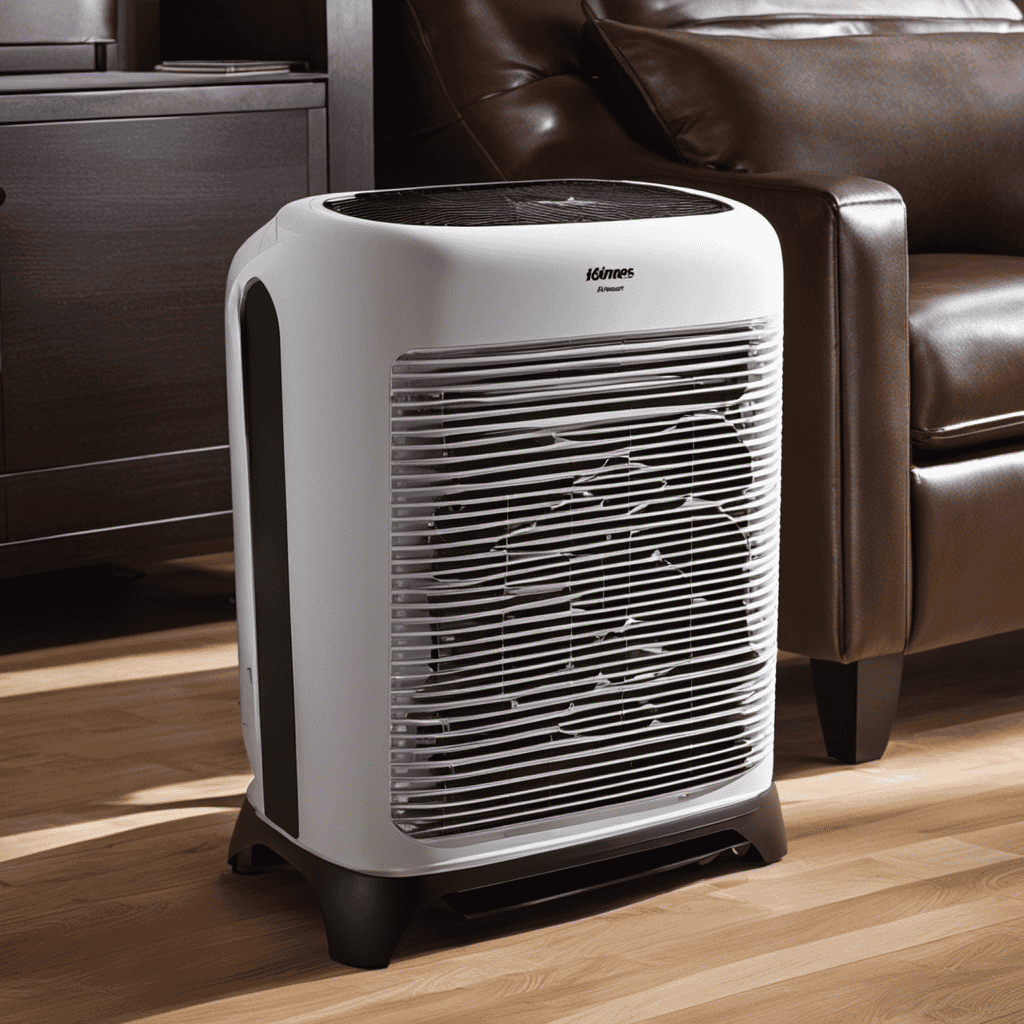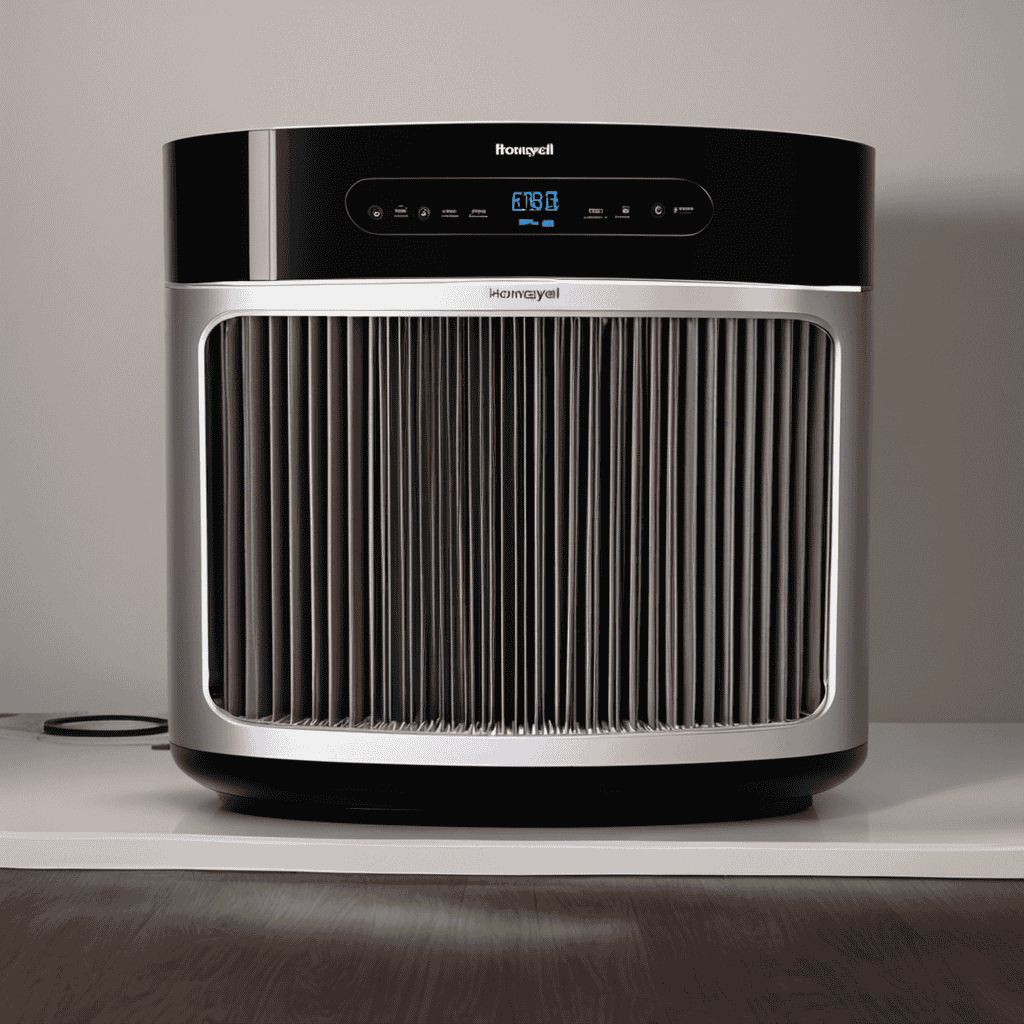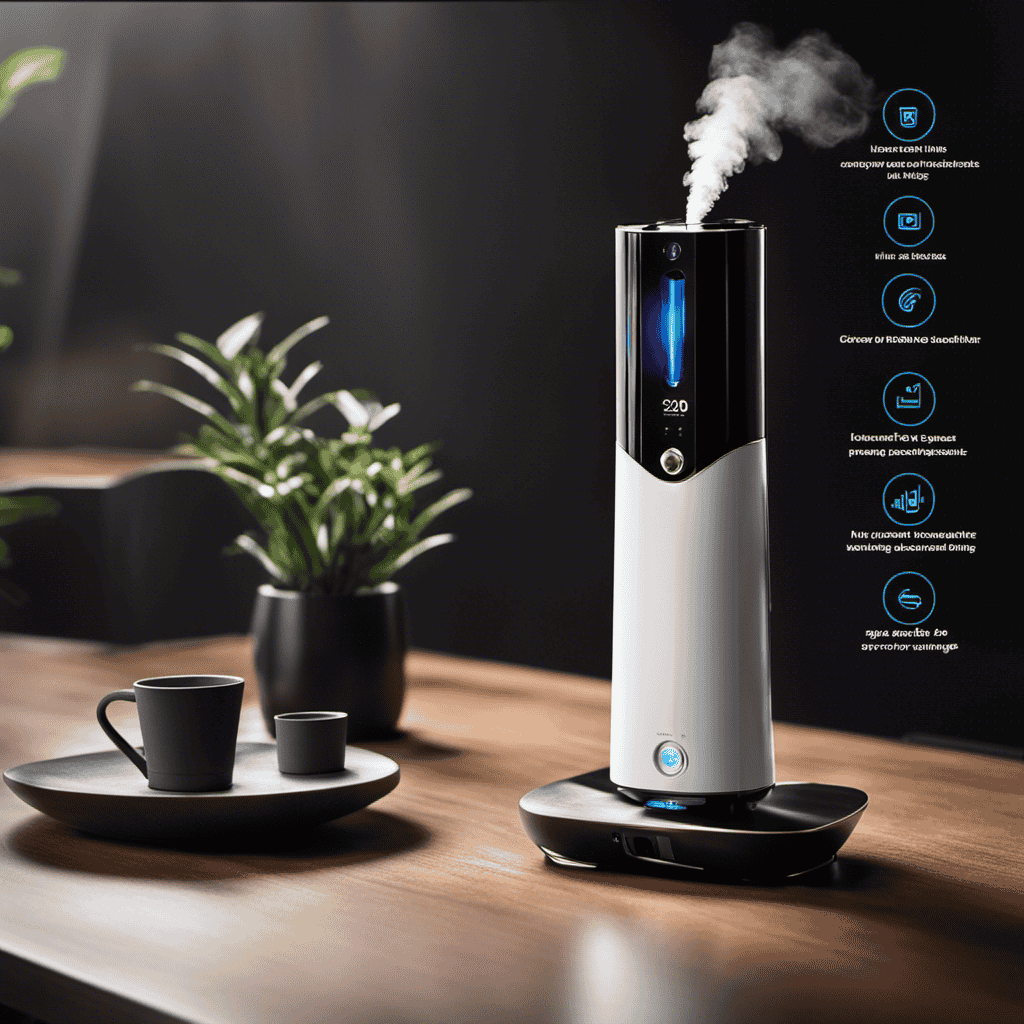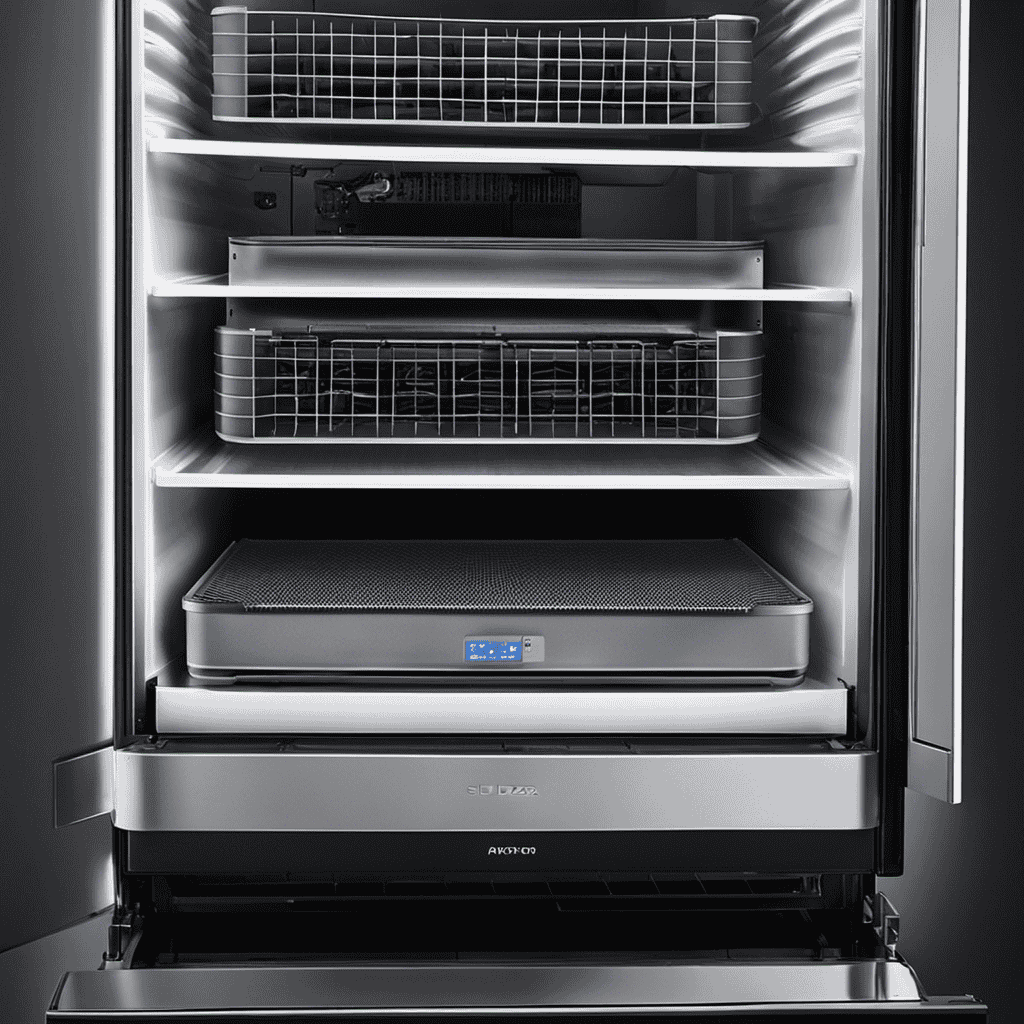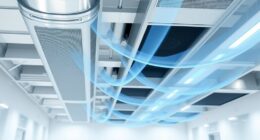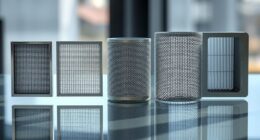I understand the thought process – picking the appropriate HEPA air purifier feels daunting. Given the vast selection available, figuring out the initial step is challenging.
But fear not! In this article, I’ll guide you through the process of selecting the perfect HEPA air purifier for your needs. We’ll cover everything from understanding the importance of HEPA filters to evaluating maintenance requirements and comparing energy efficiency.
By the end, you’ll be equipped with the knowledge to make an informed decision.
Let’s get started!
Key Takeaways
- HEPA filters are important for removing airborne particles and improving air quality.
- When choosing an air purifier, consider factors such as room size, layout, noise levels, air exchange rate, purification coverage area, and energy efficiency.
- The Clean Air Delivery Rate (CADR) measures the efficiency of an air purifier in removing pollutants and should be matched to the room size and clean air needs.
- Other considerations include noise reduction, filtration system capabilities and certifications, maintenance requirements, energy efficiency, additional features, and user reviews.
Understanding the Importance of HEPA Filters
HEPA filters are crucial for removing airborne particles and improving air quality in your home. The importance of air quality cannot be overstated. Poor air quality can lead to various health issues like allergies, asthma, and respiratory problems.
HEPA filters are designed to capture particles as small as 0.3 microns, including dust, pollen, pet dander, and even some viruses. These filters work by trapping the particles in a fine mesh, preventing them from circulating in the air.
The benefits of HEPA filters are numerous. They help reduce allergens, improve respiratory conditions, and create a cleaner and healthier living environment. With HEPA filters, you can breathe easier and have peace of mind knowing that the air in your home is clean and free from harmful pollutants.
Determining the Size of the Air Purifier
When choosing an air purifier, it’s important to consider the size of the room it will be used in. The room square footage will determine the size and power of the air purifier needed to effectively clean the air.
Additionally, the air exchange rate and purification coverage area are crucial factors to consider. These factors determine how quickly and efficiently the air purifier can filter the air in the room.
Room Square Footage
If you’re unsure about the size of the room, it’s best to measure the square footage before purchasing an air purifier. Room layout and square footage are important factors to consider when choosing the right air purifier for your space.
Here are some key points to keep in mind:
-
Room size: The square footage of your room will determine the size and capacity of the air purifier you need. Larger rooms require more powerful purifiers to effectively clean the air.
-
Air quality standards: It’s essential to know the recommended air quality standards for your room size. This will help you select an air purifier that can meet those standards and provide you with clean, healthy air.
-
Placement options: Consider the layout of your room and where you plan to place the air purifier. Make sure there is enough space for proper air circulation and that it can effectively cover the entire room.
-
Noise levels: Some air purifiers can be noisy, especially on higher fan speeds. If noise is a concern, look for models with adjustable fan speeds or quiet operation modes.
Air Exchange Rate
To ensure the air in your room is consistently refreshed, it’s important to consider the air exchange rate of the purifier you’re considering. The air exchange rate refers to the number of times the air in a room is completely replaced by the air purifier in one hour. A higher air exchange rate means the purifier is more effective at removing pollutants and improving air quality.
Research has shown that for optimal air quality improvement, the air exchange rate should be at least four times per hour. This ensures that the purifier can remove a significant amount of pollutants and allergens from the room.
When comparing different air purifiers, pay attention to their air exchange rates to find one that will effectively clean the air in your room.
Purification Coverage Area
The purification coverage area should be a key factor in deciding which air purifier to purchase. It is important to consider the size of the room or area where the air purifier will be used, as different models have different coverage capacities.
Here are some important points to consider:
-
Effectiveness: Ensure that the air purifier you choose has the capacity to effectively purify the air in your desired coverage area. Look for models with advanced purification technology that meet air quality standards.
-
Efficiency: Consider the energy efficiency of the air purifier, as a larger coverage area may require more energy consumption. Look for models that are ENERGY STAR certified.
-
Noise level: Check for the noise level of the air purifier, especially if you plan to use it in a bedroom or office. Look for models that have a low noise output.
-
Maintenance: Consider the ease of maintenance and filter replacement for the air purifier, especially for larger coverage areas.
Considering these factors will help you make an informed decision when choosing an air purifier. Assessing the clean air delivery rate (CADR) is another important aspect to consider, which will be discussed in the next section.
Assessing the Clean Air Delivery Rate (CADR
When it comes to air purifiers, understanding the Clean Air Delivery Rate (CADR) is crucial. The CADR measures the efficiency of an air purifier in removing pollutants from the air.
It is important to choose an optimal CADR that matches the size of the room and the specific needs for clean air.
CADR Importance Explained
Understanding CADR is crucial when selecting a hepa air purifier. The Clean Air Delivery Rate (CADR) is a measurement that tells you how efficiently an air purifier can clean the air in a room. Here are some reasons why CADR is significant:
-
CADR measurement explained: CADR measures the volume of clean air produced by the purifier in cubic feet per minute (CFM). It indicates how quickly the purifier can remove pollutants like dust, pollen, and smoke from the air.
-
CADR rating significance: A higher CADR rating means the air purifier can clean the air faster and more effectively. This is particularly important for individuals with allergies or respiratory issues, as it ensures that the purifier can efficiently remove allergens and pollutants from the air.
-
Improved indoor air quality: A high CADR rating means the air purifier can effectively remove harmful particles, improving the overall air quality in your home. This can lead to a healthier living environment and reduce the risk of respiratory problems.
-
Peace of mind: Knowing the CADR rating of your air purifier gives you confidence that it is capable of effectively cleaning the air in your space, providing you with peace of mind and a sense of security.
Choosing Optimal CADR
Selecting the right air purifier involves considering the optimal CADR for your specific needs. CADR, or Clean Air Delivery Rate, measures the effectiveness of an air purifier in removing pollutants from the air. To choose the optimal CADR, you need to analyze the CADR performance of different models.
Look for air purifiers with CADR ratings that match the size of the room you want to purify. A higher CADR means the air purifier can clean the air faster and more efficiently. To ensure optimal performance, consider the CADR ratings for different pollutants like dust, pollen, and smoke.
Considering the Noise Level
The noise level of a HEPA air purifier is an important factor to consider when making your selection. No one wants a loud machine disrupting their peace and quiet. Here are some reasons why noise reduction is crucial:
-
Peaceful Sleep: A quiet air purifier ensures a good night’s sleep, free from the disturbance of constant noise.
-
Improved Concentration: A quiet environment allows you to focus better, whether you’re working, studying, or just relaxing.
-
Enhanced Relaxation: The soothing hum of a quiet purifier can create a calming atmosphere, helping you unwind and de-stress.
-
Pleasant Ambiance: A quiet air purifier blends seamlessly into your living space, without causing any distractions or annoyance.
Additionally, many HEPA air purifiers offer a sleep mode feature, which further reduces noise levels during nighttime use. So, be sure to check for noise reduction capabilities and sleep mode when choosing your HEPA air purifier.
Evaluating the Filtration System
When evaluating the filtration system, it’s important to consider the effectiveness of removing allergens and pollutants. A high-quality HEPA air purifier is designed to capture and remove particles as small as 0.3 microns, including dust, pollen, pet dander, and mold spores. It’s crucial to choose a purifier that has been tested and certified by independent organizations like the Association of Home Appliance Manufacturers (AHAM). These certifications ensure that the purifier effectively removes airborne contaminants.
In addition to evaluating the filtration effectiveness, it’s also essential to consider the noise level and energy consumption of the air purifier. Look for models that have a low noise level, especially if you plan to use it in your bedroom or office. Many manufacturers provide information about the decibel levels produced by their purifiers, allowing you to compare and choose a quieter option.
When comparing the energy consumption, look for air purifiers with an Energy Star certification. This certification indicates that the purifier meets strict energy efficiency guidelines set by the Environmental Protection Agency (EPA). By choosing an energy-efficient model, you can save on electricity bills while still enjoying the benefits of clean air.
Examining the Maintenance Requirements
To ensure your air remains clean and fresh, regular maintenance is necessary for your filtration system. Here are some key points to consider when examining the maintenance requirements of your air purifier:
-
Regular filter replacement: Filters are the heart of your air purifier, capturing and removing particles from the air. It is crucial to replace them as recommended by the manufacturer to maintain optimal performance.
-
Maintenance cost: Along with filter replacement, it is important to consider the overall maintenance cost of the air purifier. This includes the cost of replacement filters and any other maintenance tasks required.
-
Cleaning schedule: In addition to filter replacement, your air purifier may require regular cleaning to remove dust and debris that accumulates over time. The manufacturer’s instructions should provide guidance on the recommended cleaning schedule.
-
Warranty: Check the warranty terms and conditions of your air purifier. Some manufacturers may offer extended warranties or cover the cost of filter replacements, which can help reduce maintenance expenses.
Comparing the Energy Efficiency
Comparing the energy efficiency of different air purifiers can help you make an informed decision about which one to purchase. Not only does energy consumption affect your electricity bill, but it also has an environmental impact. When choosing an air purifier, it’s important to consider the amount of energy it consumes and its impact on the environment. To help you in your decision-making process, here is a comparison table of the energy efficiency of four popular air purifiers:
| Air Purifier Model | Energy Consumption (Watts) |
|---|---|
| Model A | 50 |
| Model B | 35 |
| Model C | 70 |
| Model D | 40 |
Checking for Additional Features and Functions
Checking for additional features and functions can help you find the air purifier that best meets your needs and preferences. When considering an air purifier, here are some features to look out for:
-
Smart features: Some air purifiers come with Wi-Fi capabilities, allowing you to control them remotely through your smartphone. This can be convenient and user-friendly.
-
Filter replacement indicator: This feature alerts you when it’s time to replace the filters, ensuring that your air purifier continues to operate effectively.
-
Night mode: A night mode feature reduces noise and dims the lights, making it ideal for use in bedrooms or during nighttime.
-
Adjustable fan speed: Having the option to adjust the fan speed allows you to customize the purification process based on your specific needs.
Considering these additional features can help you narrow down your options and find an air purifier that not only fits within your price range but also offers the functionalities you desire.
Researching User Reviews and Ratings
When researching user reviews and ratings, it’s important to consider the experiences and opinions of others who have used the product. User experience plays a crucial role in determining the effectiveness and reliability of a hepa air purifier. Reading reviews can give you insights into how well the purifier performs in real-world situations and whether it meets your specific needs. Additionally, user reviews can provide valuable information about the durability, noise level, and ease of use of the product.
To help you make an informed decision, here is a price comparison table for three popular hepa air purifiers:
| Air Purifier | Price |
|---|---|
| Model A | $199 |
| Model B | $249 |
| Model C | $179 |
Frequently Asked Questions
Are There Any Potential Health Risks Associated With Using a HEPA Air Purifier?
There may be potential side effects associated with using a HEPA air purifier, but long-term health effects are not well-documented. It’s important to research and choose a purifier that meets your specific needs and consider other factors that may impact air quality.
Can a HEPA Air Purifier Remove Odors and Smoke Particles Effectively?
Yes, a HEPA air purifier can effectively remove odors and smoke particles. It is important to properly maintain the purifier by regularly cleaning or replacing the filters. The benefits of using a HEPA air purifier include improved indoor air quality and reduced allergy symptoms.
How Long Does a HEPA Filter Typically Last Before It Needs to Be Replaced?
Well, let me tell you, a HEPA filter’s lifespan can vary. But typically, it needs replacing every 6 to 12 months. Signs of a dirty filter include reduced air flow and a decrease in purifying effectiveness.
Can a HEPA Air Purifier Help With Allergies and Asthma Symptoms?
A hepa air purifier can be helpful for managing allergies and asthma symptoms. It filters out airborne particles, such as pollen, dust mites, and pet dander, providing cleaner air to breathe. Different types of hepa filters offer varying levels of filtration efficiency.
Are There Any Specific Brands or Models of HEPA Air Purifiers That Are Recommended for Larger Rooms or Open Floor Plans?
When choosing a hepa air purifier for larger rooms or open floor plans, it’s essential to consider recommended brands and specific models that offer high CADR ratings and wide coverage.
Conclusion
After carefully considering the importance of HEPA filters, the size of the air purifier, the clean air delivery rate, the noise level, the filtration system, the maintenance requirements, the energy efficiency, additional features and functions, and user reviews and ratings, I am confident in my ability to choose the perfect HEPA air purifier.
By juxtaposing the various factors and weighing the evidence, I can now envision a clean and fresh home environment, free from pollutants and allergens.
With the right HEPA air purifier, I can breathe easy and enjoy a healthier life.

